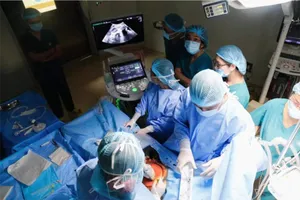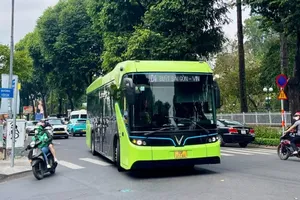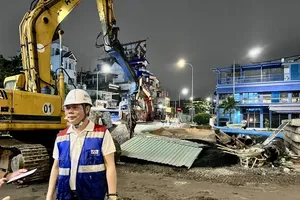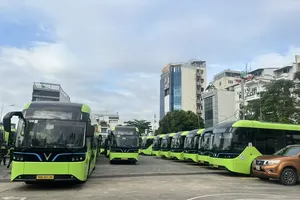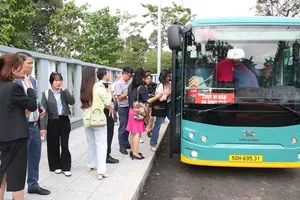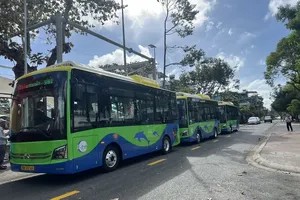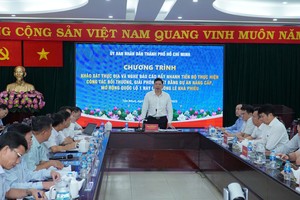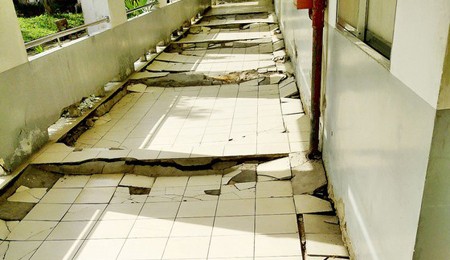
Statistics from the Ministry of Natural Resources and Environment reveal that HCMC has an average ground subsidence rate of 4cm per year, which is very fast.
Take Mental Hospital – Le Minh Xuan Branch as an example. An examination carried out by SGGP Newspaper on December 14 shows that all the ground floor of the administration block has been destroyed due to land sinking. Worse, the footings also have cracks, some of which are 10cm wide. The hospital, therefore, has to hang notices ‘Be careful not to fall’ along the walls.
A similar case is found in an apartment block on Vo Van Kiet Street in District 1. The block has a total deviation of 45cm, greatly scaring residents there. What is more, after each rain, local people in HCMC usually find ‘sinkholes’ in many urban streets due to ground subsidence.
A research by HCMC University of Technology states that the city has a very small area of hard land near Vietnam National University – HCMC (in Thu Duc District). The surface area of the land with average hardness accounts for around 40 percent, located in the North of District 9, the Northeast of Thu Duc District, the Northwest of Binh Chanh District, and the West of Tan Binh District.
The rest is very soft and highly-sinkable, which could reach the width of 10m to 30m and mostly sited in Districts 2, 4, 6, 7, 8, Nha Be, Can Gio, as well as the area along the banks of Sai Gon River. Worriedly, these are the places intended for urbanization activities, with more industrial zones, sea ports, and residential areas to be constructed in the near future.
According to Associate Prof. Dr. Nguyen Phuoc Minh from HCMC University of Science, the most prominent causes of this issue are heavy traffic activities, unstable geological structure, and concentrated urbanization. It is large construction projects that need to dig deep into the earth, unfortunately breaking the current structure of strata and creating land sinking.
Unplanned groundwater extraction also contributes to make the matter worse. However, at the moment, many districts are encouraging their residents to switch to tap-water while trying to better monitor legal groundwater exploitation.
To lessen ground subsidence in HCMC, scientists suggest that the municipal authorities must decrease constructions of high-rise buildings in soft-landed areas. It is also necessary to develop a simulation scenario in order to forecast sinking states of different places in the city and find the most suitable solutions for them.
Moreover, there is a need to re-identify land foundation standards for new construction projects in the existence of climate change.
Also, the public’s awareness about the danger of illegal groundwater extraction must be raised. The city is striving to reduce the exploitation rate from 200,000m3 per day now to one-third in the future.
Finally, HCMC is recommended to expand Northwestward since the land there is hard and sturdy.



